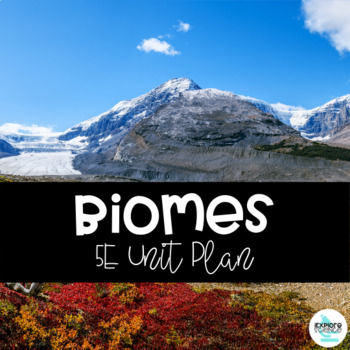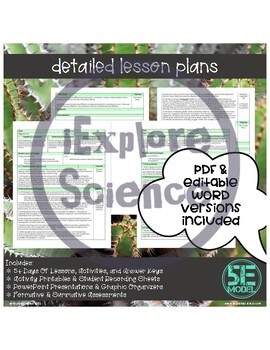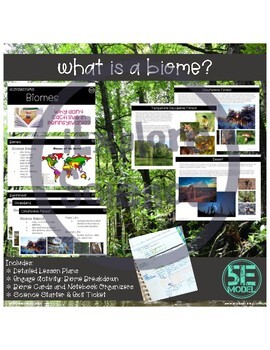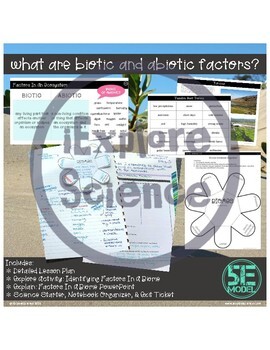Biomes -- 5E Unit Plan (NGSS MS-LS2-1)
- Zip
Description
This complete 5E instructional sequence introduces Earth’s biomes and uses these as a vehicle through which to teach biotic and abiotic factors and address the Next Generation Science Standard MS-LS2-1. It is the first unit in my NGSS-aligned Middle School Life Science Curriculum (coming soon), but it can easily be incorporated into any curriculum. Activities expect students to read, discuss, use technology, analyze data, and conduct research. Five days of complete lesson plans are included in both PDF and editable Word formats. Some assignments, such as the Biome In A Box project or the Human Activity and Biomes Workbook, are intended to be completed at home. Otherwise, students may need additional time to work through the full instructional sequence.
NGSS Aligned:
MS-LS2-1 Analyze and interpret data to provide evidence for the effects of resource availability on organisms and populations of organisms in an ecosystem.
Science and Engineering Practices:
Analyzing and Interpreting Data: Analyze and interpret data to provide evidence for a phenomena.
Crosscutting Concepts:
Cause and Effect: Cause and effect relationships may be used to predict phenomena in natural or designed systems.
What’s Included in Biomes (NGSS MS-LS2-1)?
✻ Engage: Biome Breakdown/Can A Cactus Live Here?
✻ Explore: Identifying Factors In a Biome; Biome Explore Stations
✻ Explain: Factors In A Biome Presentation; Cause and Effect Relationships Presentation
✻ Elaborate: Cause and Effect Prediction Cards;
✻ Evaluate: Exit Tickets; Biomes Assessment; Biome In A Box Project
✻ Literacy: Human Activity and Biomes Workbook
✻ Miscellaneous: Complete PDF and Word Lessons; Daily Science Starter, Daily Exit Slip; Frayer Model Vocabulary; Understanding Check Tracking Sheet; Graphic Organizers for Student Notebooks; Sample Teacher’s Notebook to Guide Instruction
Don’t Forget To Check Out These Additional Related Resources…
Changes In Ecosystems -- Data Analysis Lab and CER Writing Task (NGSS MS-LS2-4)
Biotic and Abiotic Factors -- 5E Activity Bundle (NGSS MS-LS2-4)
Changes in Ecosystems Situation Cards: Biotic and Abiotic Factors
Project Based Learning: Invasive Species Project
Activity Pack: Field Notes Food Web
Activity Pack: Where Have All The Tree Frogs Gone? Mystery
Activity Pack: Population Sampling Activity
Terms Of Use:
Copyright © 2018 Nicole VanTassel. All pages of this product are copyrighted, and all rights are reserved by the author. You may not create anything to sell or share based on this packet. The product is created for the use of ONE teacher. Please do not share with colleagues. If they like the product, please send them to my TpT store. I appreciate your support with this request! You are permitted to share ONLY the cover image of this product on your blog or via social media as long as you link back to my product on TpT. Failure to comply is a copyright infringement and a violation of the Digital Millennium Copyright Act (DMCA). Clipart and elements found in this PDF are copyrighted and cannot be extracted and used outside of this file without permission or license. Intended for classroom and personal use ONLY.





